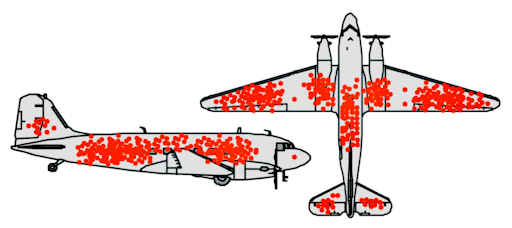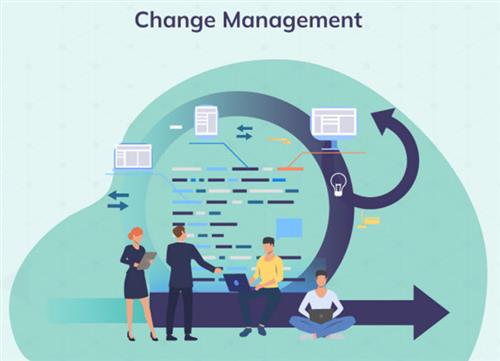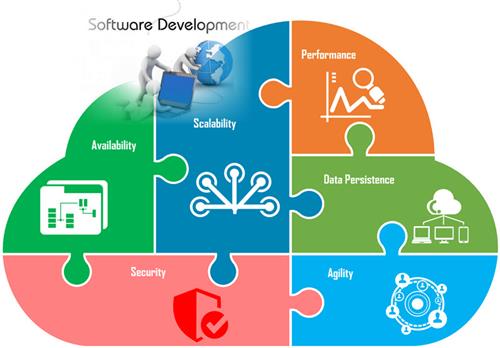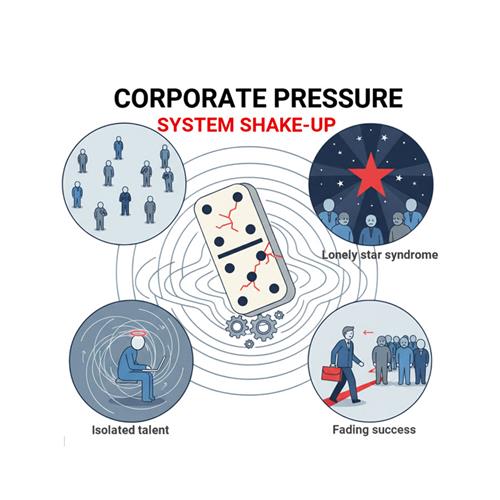
Abraham Wald and the Missing Bullet Holes
Last updated: July 23, 2025 Read in fullscreen view
- 18 Oct 2020
 How to use the "Knowns" and "Unknowns" technique to manage assumptions 21/989
How to use the "Knowns" and "Unknowns" technique to manage assumptions 21/989 - 01 Oct 2020
 Fail fast, learn faster with Agile methodology 13/973
Fail fast, learn faster with Agile methodology 13/973 - 19 Oct 2021
 Is gold plating good or bad in project management? 7/754
Is gold plating good or bad in project management? 7/754 - 10 Nov 2022
 Poor Code Indicators and How to Improve Your Code? 7/213
Poor Code Indicators and How to Improve Your Code? 7/213 - 01 Mar 2023
 Bug Prioritization - What are the 5 levels of priority? 6/207
Bug Prioritization - What are the 5 levels of priority? 6/207 - 06 Feb 2021
 Why fail fast and learn fast? 6/375
Why fail fast and learn fast? 6/375 - 14 Oct 2021
 Advantages and Disadvantages of Time and Material Contract (T&M) 4/789
Advantages and Disadvantages of Time and Material Contract (T&M) 4/789 - 08 Oct 2022
 KPI - The New Leadership 3/557
KPI - The New Leadership 3/557 - 31 Oct 2021
 Tips to Fail Fast With Outsourcing 3/375
Tips to Fail Fast With Outsourcing 3/375 - 18 Aug 2022
 What are the consequences of poor requirements with software development projects? 3/242
What are the consequences of poor requirements with software development projects? 3/242 - 12 May 2024
 The Pros and Cons of the Creator Economy in the Age of AI: Opportunities, Challenges, and the Gray Zone with the Gig Economy 3/231
The Pros and Cons of the Creator Economy in the Age of AI: Opportunities, Challenges, and the Gray Zone with the Gig Economy 3/231 - 13 Dec 2020
 Move fast, fail fast, fail-safe 2/292
Move fast, fail fast, fail-safe 2/292 - 26 Sep 2024
 Successful Project Management Techniques You Need to Look Out For 2/368
Successful Project Management Techniques You Need to Look Out For 2/368 - 28 Dec 2021
 8 types of pricing models in software development outsourcing 2/417
8 types of pricing models in software development outsourcing 2/417 - 10 Dec 2023
 Pain points of User Acceptance Testing (UAT) 2/416
Pain points of User Acceptance Testing (UAT) 2/416 - 23 Sep 2021
 INFOGRAPHIC: Top 9 Software Outsourcing Mistakes 2/411
INFOGRAPHIC: Top 9 Software Outsourcing Mistakes 2/411 - 17 Feb 2022
 Prioritizing Software Requirements with Kano Analysis 2/280
Prioritizing Software Requirements with Kano Analysis 2/280 - 19 Apr 2021
 7 Most Common Time-Wasters For Software Development 1/525
7 Most Common Time-Wasters For Software Development 1/525 - 26 Dec 2023
 Improving Meeting Effectiveness Through the Six Thinking Hats 1/205
Improving Meeting Effectiveness Through the Six Thinking Hats 1/205 - 05 Jan 2024
 Easy ASANA tips & tricks for you and your team 1/180
Easy ASANA tips & tricks for you and your team 1/180 - 11 Jan 2024
 What are the Benefits and Limitations of Augmented Intelligence? 1/434
What are the Benefits and Limitations of Augmented Intelligence? 1/434 - 23 May 2024
 Mastering AI: Sharpening the Axe in the Digital Age 1/182
Mastering AI: Sharpening the Axe in the Digital Age 1/182 - 15 Aug 2025
 Quantum Technology: Global Challenges and Opportunities for Innovators /56
Quantum Technology: Global Challenges and Opportunities for Innovators /56 - 14 Mar 2024
 Why should you opt for software localization from a professional agency? /117
Why should you opt for software localization from a professional agency? /117 - 12 Mar 2024
 How do you create FOMO in software prospects? /127
How do you create FOMO in software prospects? /127 - 09 Sep 2024
 How AI Rewriting Can Improve Your Content’s SEO Performance /140
How AI Rewriting Can Improve Your Content’s SEO Performance /140 - 12 Sep 2024
 Be Water, My Friend: Fluidity, Flow & Going With the Flow /149
Be Water, My Friend: Fluidity, Flow & Going With the Flow /149 - 06 Nov 2019
 How to Access Software Project Size? /236
How to Access Software Project Size? /236
You may not know the name Abraham Wald, but he has a very valuable lesson you can apply to problem solving, engineering, and many other parts of life. Wald worked for the Statistical Research Group (SRG) during World War II. This was part of a top secret organization in the United States that applied elite mathematical talent to help the allies win the war. Near Columbia University, mathematicians and computers - the human kind - worked on problems ranging from how to keep an enemy plane under fire longer to optimal bombing patterns.
One of Wald’s ways to approach problem was to look beyond the data in front of him. He was looking for things that weren’t there, using their absence as an additional data point. It is easy to critique things that are present but incorrect. It is harder to see things that are missing. But the end results of this technique were profound and present an object lesson we can still draw from today.
What Abraham Wald found was a logical error known as Survival Bias
To a mathematician, the structure underlying the bullet hole problem is a phenomenon called survivorship bias. It arises again and again, in all kinds of contexts. And once you’re familiar with it, as Wald was, you’re primed to notice it wherever it’s hiding.
"Survivorship bias", or "Survival Bias", is the logical error of concentrating on the people or things that "survived" some process and inadvertently overlooking those that did not because of their lack of visibility.
- The Misconception: You should focus on the successful if you wish to become successful.
- The Truth: When failure becomes invisible, the difference between failure and success may also become invisible.
The Economic Impact of Survivorship Bias
Survivorship bias leads to several major consequences in the decision-making process since it:
- Encourages overly optimistic thinking: Just focusing on the successful portion of a given scenario can lead you to believe in a distorted reality where things are simpler or more likely to turn out well than they actually are. You can end up taking needlessly big risks as a result of this, both personally and financially.
- Omits significant voices: By limiting its view to only the positive results in a situation, survivorship bias leaves out the vital voices of those who have struggled to succeed.
- Suggests causation from correlation: If you look at all of the “success stories” of a particular group, you might start to notice patterns (or correlations) that offer a false sense of causation. For example, if you look at a few of the most prosperous billionaires or successful businesses, you might start to believe that being a college dropout is the first step towards becoming a high-power CEO. This perspective ignores all of the people who gave up and didn't succeed.
Example of Survivorship Bias
Survivorship bias is a fallacy in reasoning that has been observed to be significant in various domains, such as:
How to Address Survivorship Bias?
The best way to identify and address the survivorship cognitive bias is to ask yourself what’s missing. When looking at a given data set, consider any other possible data points that were on the “same path” as the successful data points but might not be present in the final data.


































 Link copied!
Link copied!
 Recently Updated News
Recently Updated News